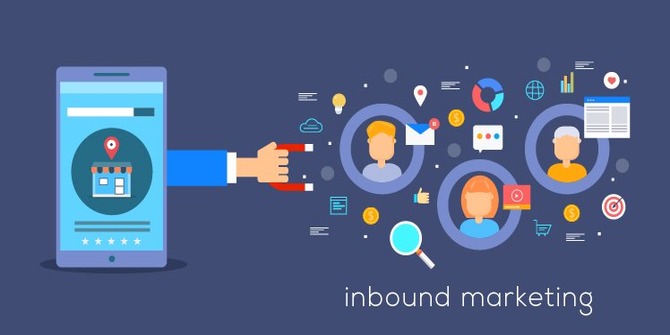Email marketing is an increasingly popular form of digital marketing, and it has the potential to be a powerful tool for driving your inbound strategy. This article will look at how you can use email marketing to fuel your overall inbound strategy using HubSpot’s tools and features. We’ll cover topics such as segmentation, automation, personalization, and more – all of which can help you provide targeted content to the right people at the right time. So let’s get started exploring how email marketing can make your inbound strategy more effective!
Introduction
Email marketing is a powerful tool that can help you reach your target audience and achieve your business goals. But email marketing can be even more effective when it’s part of an inbound marketing strategy.
An inbound marketing strategy is a holistic approach to marketing that attracts strangers and turns them into customers and advocates. And email marketing is a key component of an inbound marketing strategy.
Email marketing can help you:
Generate leads: Email lets you capture leads with forms and calls-to-action (CTAs). You can then nurture these leads with targeted content until they’re ready to buy.
Drive traffic to your website: Include links to your website in your emails to encourage recipients to click through to your site. Once on your site, visitors can learn more about your products or services and take action, such as making a purchase or signing up for a newsletter.
Nurture relationships: Send relevant, timely content to keep your contacts engaged. You can also use email automation to send triggered messages based on contact interactions, such as abandoned cart emails or birthday greetings.
When used as part of an inbound marketing strategy, email marketing can be a powerful tool for driving results.
Marketing with Email
Email is often one of the first things people think of when they hear the word “marketing.” It makes sense – after all, email is an excellent way to reach out to your target audience without spending a lot of money.
However, email marketing is just one part of inbound marketing. In order for your email marketing campaign to be truly effective, it needs to be integrated into your overall inbound strategy.
Here are a few ways you can use email to fuel your inbound marketing strategy:
1) Include calls to action in your emails.
Your emails should always include a call-to-action (CTA) that encourages the recipient to take some sort of action, such as visiting your website or subscribing to your blog. By including CTAs in your emails, you’ll be able to drive traffic back to your website and generate leads.
2) Use segmentation to send targeted emails.
One of the best ways to ensure that your emails are being read and acted upon is to segment your list so that you’re only sending relevant messages to those who will actually find them useful. For example, you might segment your list by geographic location, age group, or interests. By doing this, you can avoid the “spray and pray” approach, where you send out mass emails without really knowing if they’re going to be relevant or helpful for the recipient.
Why Email Marketing is Important to Your Inbound Strategy
Email marketing is a critical part of inbound marketing because it allows you to nurture your leads and build relationships with your customers. By providing valuable content and offers, you can encourage leads to move through your sales funnel and convert into customers.
Email marketing also provides a way to stay in touch with your customers after they’ve made a purchase. You can use email to upsell and cross-sell products, as well as provide customer support. By maintaining a relationship with your customers, you can keep them coming back for more.
Overall, email marketing is an essential part of inbound marketing because it helps you attract, engage, and retain customers.
Types of Email Campaigns
Welcome emails: A Welcome email is sent when a new subscriber joins your list. This type of email should introduce the subscriber to your brand and what they can expect from receiving emails from you.
Engagement emails: Engagement emails are sent to keep subscribers engaged with your brand and content. They can be used to promote new blog posts, encourage readers to download a piece of content, or simply check in with subscribers to see how they’re doing.
Lead nurturing emails: Lead nurturing emails are designed to build relationships with subscribers who may not be ready to buy your product or service just yet. By sending helpful information and valuable resources, you can stay top-of-mind with leads until they’re ready to purchase.
Reactivation emails: Reactivation emails are sent to subscribers who have been inactive for a while in an effort to get them interested in your brand again. This type of email can include special offers, discounts, or simply updated information about your company.
The Process of Developing an Email Campaign
Email marketing is a powerful tool that can help fuel your inbound marketing strategy. But how do you go about developing an email campaign that will be effective?
There are a few key steps to take when developing an email campaign:
1. Define your goals: What do you want to achieve with your email campaign? Make sure your goals are specific, measurable, achievable, relevant and time-bound.
2. segment your audience: Who are you trying to reach with your email campaign? Segmenting your audience allows you to target them more effectively with tailored messages.
3. Create compelling content: Your email content should be engaging and offer value to the reader. Include a strong call to action so that recipients know what you want them to do next.
4. Test, test, test: Before you launch your campaign, it’s important to test everything from the subject line to the call-to-action button. This will help ensure that your campaign is as effective as possible.
Following these steps will help you develop an email campaign that can successfully fuel your inbound marketing strategy.
Sending Out an Email Campaign
Once you have a list of contacts, it’s time to start sending out your email campaign! Creating an email campaign is easy with most email marketing platforms and only requires a few steps.
First, create a new campaign and give it a name. Then, select the type of campaign you want to create. For most purposes, an “email blast” will suffice.
Next, add your contacts to the campaign. You can either upload a list of contacts or manually add them one at a time. If you have a large number of contacts, it may be easier to upload them in bulk.
Finally, write your email content and send the campaign! Be sure to proofread your content before sending it out, as you don’t want any typos or errors in your final product.
And that’s it! Once your email campaign is sent out, all that’s left to do is wait for the results. Keep an eye on your open and click-through rates to see how successful your campaign was.
Resulting KPIs of an Email Campaign
There are a number of key performance indicators (KPIs) that can result from an email marketing campaign. These KPIs can provide valuable insights into the effectiveness of your email marketing efforts and can help you to improve the results of future campaigns.
Some of the most important KPIs to track include:
Open rate: This is the percentage of people who open your email. A high open rate indicates that your subject lines and/or content are effective in getting people to engage with your emails.
Click-through rate: This is the percentage of people who click on at least one link in your email. A high click-through rate indicates that your email content is relevant and interesting to your audience.
Conversion rate: This is the percentage of people who take the desired action after clicking through from your email (such as making a purchase or signing up for a newsletter). A high conversion rate indicates that your email marketing campaign is successful in driving results.
Final Thoughts
The takeaways from this article are that email marketing can be a great way to fuel your overall inbound strategy, but it’s essential to do it right. The first step is understanding what your audience wants and needs from you and then creating content that speaks to those desires. Email marketing can be a powerful tool to drive traffic and conversions, but only if it’s done correctly.



